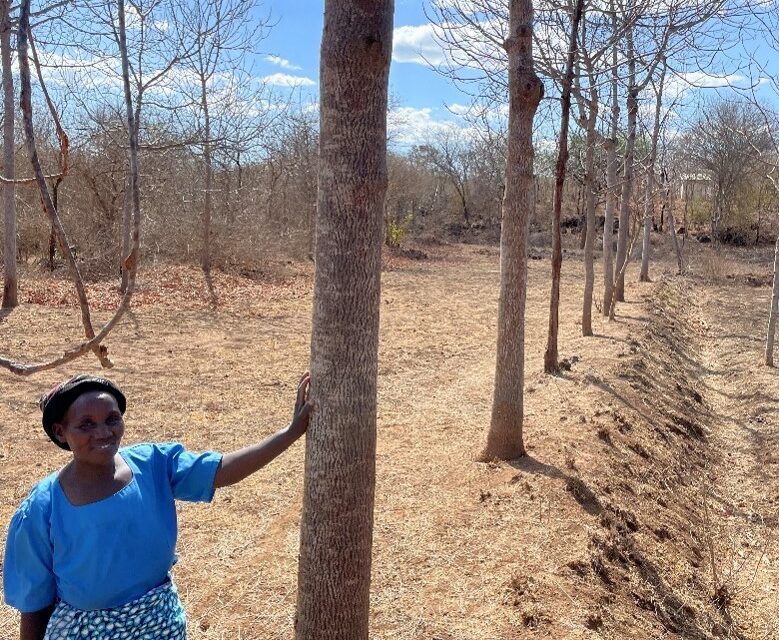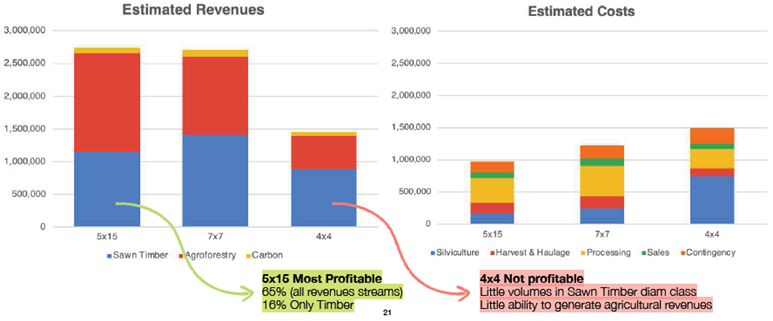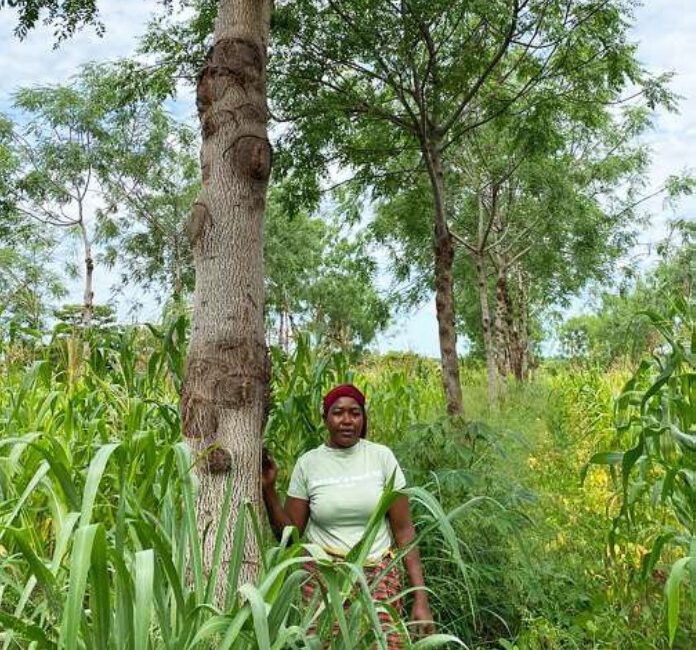Potential of Melia Volkensii in Kenya's ASAL
Addressing seed production and silvicultural knowledge gaps

Introduction
Stretching across 89% of Kenya, the drylands will play an important role in Kenya’s reforestation. Kenya Kwanza recognises this, introducing initiatives to establish 2 million hectares of agroforestry woodlots in the drylands by 2030. Melia volkensii is uniquely placed to deliver this goal. Native to the East-African drylands, the species grows quickly, supports soil fertility and drought mitigation, all the while producing high quality timber that can earn producers profits of KES130k per hectare over a 15 year rotation[1]. With 60% of this income coming from timber, and the rest from agroforestry crops, Melia can unlock multiple revenue streams, giving farmers time to allow the tree to reach maturity and helping to meet Kenya’s growing demand for timber.
Despite this, Melia volkensii remains largely confined to its native areas. In July 2022 Gatsby Africa worked with Contardo Consulting to investigate the entire value chain and examine why the species is not being adopted more widely. Lack of access to high-quality seeds, land and limited knowledge on growing techniques were cited as key issues. In December 2022, we held a workshop with key industry players to discuss the results.
Stakeholder engagement confirmed the findings from our report. By boosting access to improved seed, disseminating information on growing techniques more effectively, and improving access to land, Melia production has the potential to soar. Below we have outlined the main challenges the species faces, and how they can be remedied.
Access to seed
Melia is a popular species within its native range, but its long and unreliable germination process and inconsistent natural seed has limited its uptake across the drylands. After a decade of research and investment from KEFRI and JICA (Japanese International Cooperation Agency), the new generation of F1 seeds are found to be significantly more reliable, producing consistent, fast-growing trees able to grow high quality timber. However, access to KEFRI’s F1 seeds is quickly becoming one of the biggest barriers to production. Our estimates show that current orchard capacity sits at around 10-12 million seeds, of which seeds for only 3.2 million seedlings are collected. With maturing of the young orchards, KEFRI will be able to maximise its orchard capacity, and if KEFRI collects and sells all available seed, production could soar to 24 million seeds a year.
Larger commercial nurseries can also play an important role in unlocking economies of scale, reducing seedling cost and presenting scalable opportunities for farmers. However, this lack of access has dissuaded larger private players from focusing on Melia. During our workshop participants all expressed that they wanted to invest, but it’s simply “not viable without greater access to improved seed”.
Growing Techniques
The 2022 report also emphasised the impact growing techniques can have. As a lesser-known species, access to growing information continues to hinder production efforts. Melia has the potential to grow 20m tall and 40cm wide in 10-18 years, but growth is highly dependent on planting spacing. If planted too close together, trees can struggle to grow beyond 15cm wide, making them unsuitable for high quality furniture production and reducing value potential.

(Figure 1: Field observations of different planting regimes were used to estimate average growth rates and associated production costs, while revenues are based on current prevailing market prices of quality timber, with 40% processing efficiency, and average prices of suitable agroforestry crops)
While most literature recommends planting at 400-625 stems per hectare, carrying out multiple thinnings, the lack of market appetite for small diameter Melia and high cost of seeds makes this unfeasible. The table above shows that while both 5×15 and 7×7 plantings can bring in high revenues, traditional 4×4 techniques are unprofitable.
Agroforestry models, where trees are planted with a spacing of 7m by 7m or 15m by 5m (<300 stems per hectare), sees trees growing at almost three times the rate of standard monospecific plantings.
Access to land

Melia at 7 years old, with diameter of >20cm. Planted in low
spacing (5m by 15m) in an agroforestry model demonstrating
good growth rate and stem form while generating multiple
revenue streams and minimising management costs. Photo
Jan Vandenabeele
Finally, despite availability, land continues to go unplanted. Adopting an agroforestry model holds particular potential for Melia, allowing land to be used for other productive uses simultaneously. However, to work effectively these solutions must to be designed with the needs of livestock stakeholders also in mind; ensuring young trees aren’t damaged by grazing livestock, but also ensuring livestock have access to sufficient fodder.
Swift Geospatial’ s site species matching tool (forestryplatform.com/) estimates there is 11.4m ha of suitable land for Melia in Kenya. If GoK targets are to be met, a large proportion of compatible land needs to be made available for planting.
However, not all landowners will have the capacity to manage Melia themselves. Service delivery models can facilitate direct partnerships between landowners and/or extension services, addressing knowledge gaps and land access simultaneously. Models are already being tested, but investment is needed to scale these solutions.
Moving forwards
The opportunity is clear. Melia has the capacity to generate multiple income streams (timber, firewood, leaves for fodder, intercropping with grass or cash crops) for farmers, producing high quality timber while supporting soil health and drought mitigation. As a fast-growing tree native to the east African ASAL, it is perfectly placed to realise the governments ambitious targets and contribute to Kenya’s growing demands for timber. However, several barriers stand in the way. By maximising seed production, sharing planting best practices, and working with private landowners to secure access to land, the opportunity can be realised. Please find the full technical report below.
Melia Volkensii Technical ReportThis article was original published by Miti Magazine. Please find the original article here
The material in this publication is for general information purposes only and does not constitute professional advice. Gatsby Africa [and Contardo Consulting] [does/do] not accept any liability for any use of the contents of this publication.